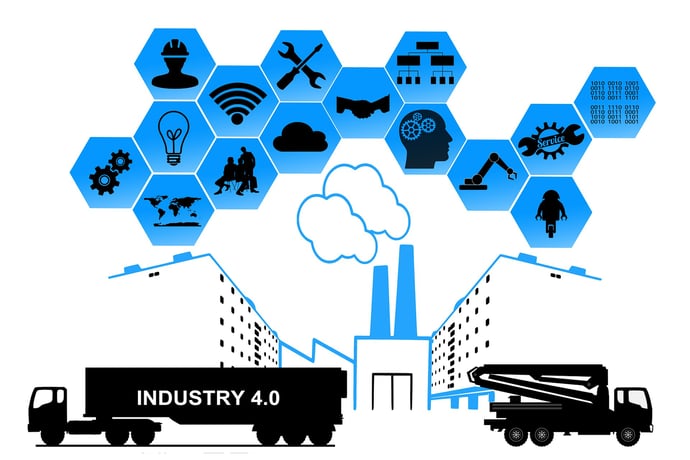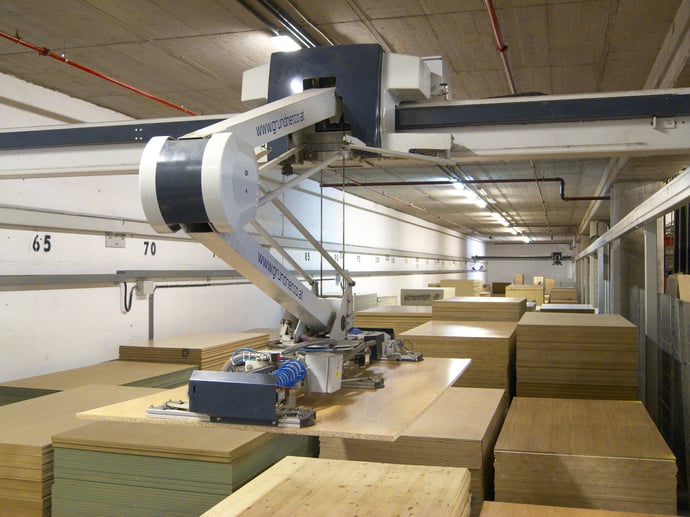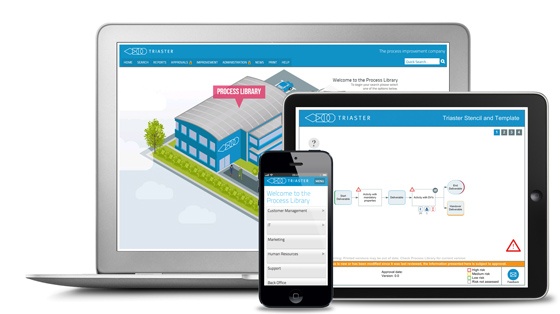It's an interesting time in the construction industry. It is at the tipping point of digital transformation, which, according to many experts, equates to a 'digital construction revolution'.
In the run-up to UK Construction Week next week and Digital Construction Week the following week, October seems like a pretty good month to talk about the influence digital transformation is having on the construction industry right now and make you aware of the '4th Industrial Revolution' and why the construction industry needs it badly.
The Future is a Digital Construction Industry

There are definite problems with the way contemporary construction projects are being organised, managed and carried out. At a micro level, Berlin's Brandenburg airport is a famous example of a modern construction 'nightmare scenario'. The airport is running 5 years over schedule, 6 times over budget with no end date in sight. At a macro level 90% of the world's infrastructure projects are either late or over-budget. The construction industry also has the lowest efficiency gains of any industry...period.
That doesn't make for good reading and suggests the current business model needs to change.
According to a study carried out in March 2016 by Virgin Media Business and Oxford Economics, construction ranks as the industry third most likely to benefit from digital transformation.
This prognosis provided ammunition to industry experts who have pointed to the need for the industry to move with the times and go digital. While we aren't quite at the 'replacing humans with robots' point just yet, it is true that the construction industry has lagged behind in regards to embracing the types of digital transformation that are useful in creating more efficient construction projects today.
In September this year, Simon Miller, a partner at The Boston Consulting Group was speaking to the NZ Property Council and said that while the industry had traditionally lagged behind in terms of construction innovation, it was about to undergo a significant change.
Pointing to new techniques used in the construction of Dubai's Burj Khalifa and Stockholm's Karolinska Hospital, Miller laid out why change is inevitable by stating that a skill shortage and an ageing workforce meant that the industry would really start feeling the strain if it didn't engage with change. Statistics out of New Zealand suggest that they need 30,000 more construction workers by 2019 - meaning that Simon Miller was already preaching to the choir.
With the rise in demand for sustainable buildings and the world's urban population growth being measured at approximately 200,000 per day, it's not just Infrastructure and housing that are needed, it's a new mode and model of delivery.
However, although current practices need to update and embrace current digital trends, I believe it's also important not to naval gaze. For some companies, chasing new technology that offers potential now but not efficiency gains is not the smart move (considering that efficiency is the industry's number one problem), but narrowing the focus on harnessing and applying those technologies that are already producing a measurable increase in efficiency will prove more beneficial. Robots are cool and all but can they deliver a project cheaper and quicker? That's what construction companies will want when they start to adopt construction innovation projects.
Organisations need to be looking at implementing a culture of digital transformation with small improvements over time by choosing projects that have proven ROI benefits. Once the key stakeholders are on board and the wider company has adopted the new vision, they can then start to cast the net a bit wider to harness more challenging digital construction projects.
Digital Construction Innovations That Can Be Harnessed Today

Automation, Internet of things and Business Process Management are three areas that are already providing ROI in terms of reducing time, effort and waste in organisations. These areas eliminate the need for paper-based processes and documents, increase reliance on analytics to measure improvement opportunities and allow greater reliance on management systems causing efficiency to be more identifiable and measurable.
A few months ago, Lucy Abbott, Building Information Modelling Director at Wates Construction Group was speaking at the FT Future of Construction Summit. She stated that "Projects are increasing in both complexity and scale, and demand is growing for industry to demonstrate their ability to deliver assets which reduce cost and enhance performance; both of which will require the sector to adopt new ways of thinking and working."
I couldn't agree more, but how exactly do we manage this?
Let's start by looking at the Internet of Things. This is the idea behind not just making things, but 'smart things' that can be connected; meaning that your fridge, microwave, coffee machine, lighting system, air conditioning (among other things) can all speak to each other and provide you with measurable data to increase project efficiency. Experts predict that more than half of businesses will run on the Internet of Things by 2020.
Lucy contends that it is necessary "to assimilate more knowledge about how buildings are performing in order to improve. Buildings can generate vast amounts of data; however the majority of this information is often not utilized effectively."
By using SMART technology (Self-Monitoring, Analysis and Reporting Technology), improvement professionals are now able to turn data into measurable reporting data that can be used to improve processes and more advanced construction firms are using 3D printing as a means to produce components for modular construction and drones that inspect sites monitoring progress, quality, and safety.
While it's great to be kept up-to-date with cutting edge innovations, we are getting a little ahead of ourselves.
There are still many construction companies using paper-based processes that are slow to embrace change. Process Mapping software and Process Management systems have been around for decades and have proven to be efficient and effective in reducing waste, time and money. This is due to easily accessible Process Libraries and Process Mapping tools that capture current processes and model efficiency improvements, and methodologies built around Continual Improvement that enable organisations to capture data, share it with the key stakeholders, allow those same stakeholders to use the improved processes on a day-to-day basis and to improve process efficiency as they go.
Why Construction Projects Need Digital Transformation

In PWCs Annual Global CEO survey, 64% of E&C CEOs said they believe that their companies face more threats than three years ago. In response to this fear, 68% plan to implement a cost-reduction initiative in the next 12 months. Even more interesting is the fact that 74% of all respondents believe that technology will be the major differentiating factor for companies in their industry in the next 5 years.
Christopher Dann is a Principal and advisor to PWC US. He states that some of the ways to cut costs are by creating "offshored and consolidated design centers and adopted BIM (building information modelling) systems to automate much of the work of design and engineering and to supply critical information to workers on the construction site itself. Workers can also share information across project sites and send it back to the home office."
Waste is reduced and safety is boosted by simulating construction before the project begins, this is also true of process modelling, which provides a way to simulate improvements before implementations take place and estimate the cost of process change as well.
Christopher Dann also states that although there are techniques that can speed up design and execution of projects, which leads to lower costs, your digital transformation project must be implemented at the centre of your strategy, otherwise, improvement is going to be hard to come by.
Here is his two-step process:
- The E&C firm needs to use collaborative technology to create a full online process and document archive that features every aspect of the engineering and construction process - this must include information from the supply chain and then display this to customers to represent project progress in real time.
- Demonstrating better performance and communication at lower costs to customers ensures that you will have an extremely positive reputation and be a leader in the industry.
Where to from Here?
If you are looking for a digital road map to business transformation then doing away with paper-based processes is the first step. After this, it is important to understand how to implement a Continual Improvement process approach within your organisation.
Lastly, the  is a 12-page report which explores how you can use a Process Library to capture your current business processes in a single system and model and simulate changes to find the most effective way of implementing project improvement.
is a 12-page report which explores how you can use a Process Library to capture your current business processes in a single system and model and simulate changes to find the most effective way of implementing project improvement.
"What is absolutely certain is that the industry is only going in one direction and that is digital" - Lucy Abbot, Building Information Modelling Director at Wates Construction Group
Related Articles:
Written by Brad Fagan
Brad joined Triaster in 2016 as our Content Marketing Executive hailing all the way from Middle Earth (the film version, not the book) – New Zealand. Brad’s video skills soon resulted in new weekly Triaster videos and his individual touch in some of the Connector and blog articles. In June 2018 Brad moved to Germany with his wife Lynn.
